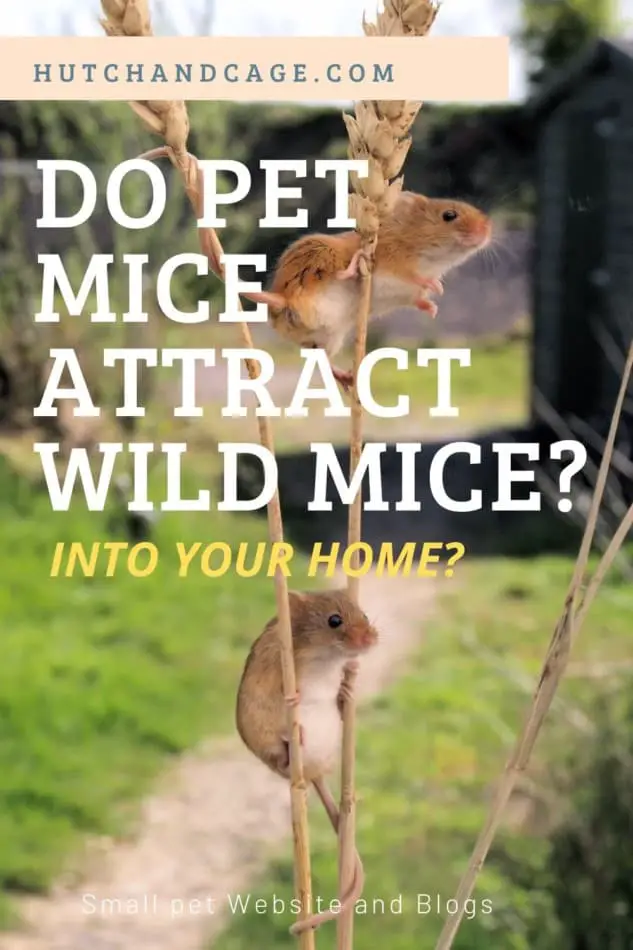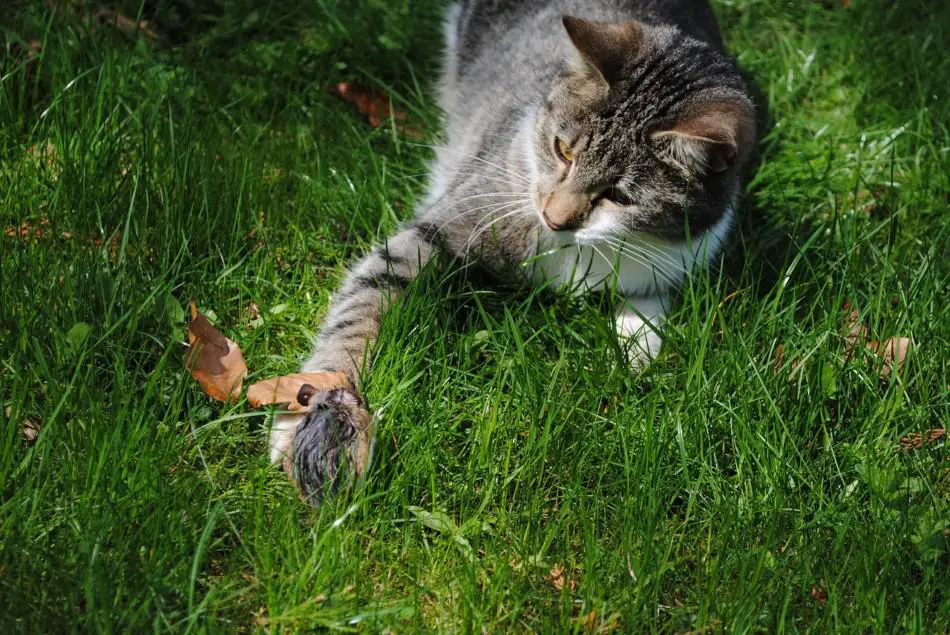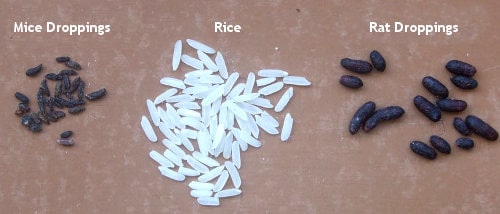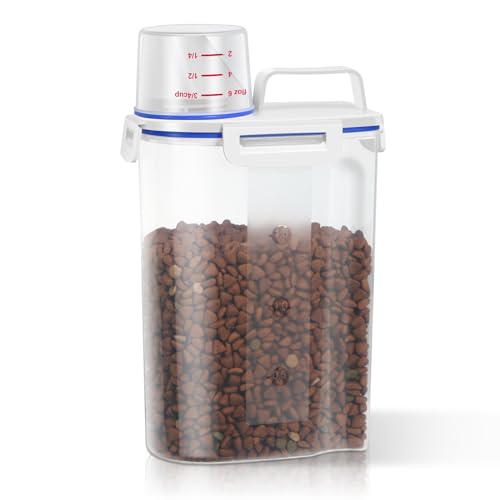There is plenty of company out of doors for wild mice. They have no reason to come inside looking for more. Rather, wild mice are attracted to homes in their quest for shelter, food, and somewhere safe from predators, where they can live. So we ask the question…
Do pet mice attract wild mice into your home? To ensure any pet does not attract wild mice into your home you’ll need to keep their living conditions clean, hygienic and tidy. Keep food in an airtight container and dispose of any waste and uneaten food in the correct manner.

Table of Contents
What Will Attract Wild Mice Into Your Home?
- Plentiful food: Perhaps the number one attraction for mice is food. In nature, resources tend to be scarce. Cupboards of food, or – better yet – crumbs on the floor, create a veritable mouse paradise. Sometimes, the presence of mice can indicate a dirty home. Leftovers on the counters or floor can prove a powerful draw. Some will sweep, vacuum, or wipe surfaces down more frequently to deter mice.
- Predators in the area: Mice are not only lured indoors but driven there as well. They may seek safety in your home if there are more predators around than usual. This includes foxes, snakes, cats, weasels… there are many predators that consider mice a quick and easy meal. Fortunately, this can also be used to your advantage. To keep a mouse infestation at bay, a household cat can prove incredibly effective.
- Shelter: Sometimes, mice will retreat indoors during the Wintertime. This is to give birth or simply to escape the chill. Your best bet, in this case, is to block up any holes, vents, cracks under doors, or the like. You may need to find a cat if this fails to work.
Do Pet Mice Attract Rats Into the Home?
Mice do not, in fact, attract rats into the home. However, what attracted the mice might entice rats as well. Actually, rats and mice do not get along in general.
When they come into contact with mice, rats tend to act aggressively and attack. When they are hungry enough, some rats will even kill and eat mice. This hardly makes these two types of rodents friendly. Where there are rats about, mice will try to lay low.

What is the Difference Between Wild Mice and Domesticated Mice?
There is actually quite a difference between wild mice and domesticated mice. This is not only in temperament but also in how they look.
Wild Mice
Wild mice have been roaming wild for a very long time! They have been known as pests most of all, thanks to their tendency to get into housing and food uninvited. Wild mice are extremely timid by nature. They are prey for birds, snakes, foxes, cats… wild mice are hard-pressed to survive.
While domesticated mice can live up to 2 years, wild mice tend to make it only a couple of months before they are hunted down. They will live in shelters that they find, or burrows that they make.
Human habitations are the perfect situation for a mouse: safety from predators, and access to food and warmth. This is what will attract wild mice into your home.
Wild mice tend to come in limited colors, which are brown, gray, and sometimes black. Compared to Fancy Mice, they also tend to be rather small.
Wild mice are not picky when it comes to food; they will eat whatever is available. This includes human food, grains, meal-worms, plants, seeds, eggs, and the like.
You can also find wild mice, by the name of feeder mice, at your local pet store. These are bred specifically to be fed to pets like snakes, turtles, and the like.
Domesticated Mice
Domesticated mice are also called Fancy Mice. These were first bred in Japan, for coloring, eye color, and other traits that were found desirable. This resulted in an assortment of mice to choose from.
These days, you can find mice in black, chocolate, white, blue, lilac, cream, fawn, red, champagne, silver, dove, and more.
Any mice that have been bred and domesticated may be referred to as Fancy Mice. In general, compared to the wild mouse, the Fancy Mouse is braver and more sociable. Wild mice also tend to come in brown or gray, whereas Fancy Mice come in just about every color of the rainbow.
Fancy Mice are typically kept in a cage. To prevent them from chewing through it, this will be made from hard plastic or metal. The spacing between the bars should be no more than ¼ inch.
This cage is filled with bedding, for both comfort and hygiene. Typically, aspen wood shavings or paper are used for the Fancy Mouse. Both are non-toxic and allergen-free. Finally, the Fancy Mouse will get most of its energy out with an exercise wheel. They also appreciate a few toys and things to chew.
Fancy Mice eat food from the pet store, along with fruits and veggies as an occasional snack.

Pet Mice Should be Protected from Other Animals in the Home
Because so many animals see mice as prey, you must be careful about pets in the house. Cats and dogs, in particular, tend to show interest in eating mice. Even if your cage protects your mouse, they will be understandably terrified by a predatory pet attack.
Avoid this situation altogether by keeping your mouse cage up high. Also, consider keeping the cage in a room that your other pets are unable to enter. You should never trust a cat or a dog with a mouse alone. Small children can also be a real risk.
The ideal location for your mouse is on a dresser or the like. They should be placed somewhere that they are secure. The area should also be quiet enough that they will be able to relax.
How to Tell If There Are Wild Mice In Your Home
There are a few sure-fire ways you can tell if you have a wild mouse in your home. And if you have one, you can be certain there are more.
One of the first things you may notice is noise at nighttime. Just one mouse can make quite the ruckus! You may find yourself wondering if you have a ghost… that is, until you find the droppings that have been left behind.

Image credits Here!
At this point, you will be in little doubt that you have wild mice in your home. You may even find bags of food that they have begun to chew through.
So, what can you do? That depends on your personal preference. Some opt to do away with the mice. Mousetraps are a popular solution. A cat is one way to exterminate wild mice that is more natural and less cruel. There are also ways to catch mice that are humane.
Humane Ways to Catch Wild Mice
Clearly, no one wants wild mice in their home. Wild mice and domesticated mice are simply not the same. You can keep your pet mice in a cage.

Available on Amazon here
This will prevent them from getting into anything they should not have. Mice on the loose, such as wild mice, tend to help themselves to whatever is available. They also leave behind droppings and urine.
There are a few ways that you can address the situation.
Mouse-lovers tend to opt for methods that are more humane. Perhaps the best of these is a simple humane mousetrap, bought online or at your local pet store. These are plastic containers that you can place bait in; once the mouse enters, the container will close.
The living and unhurt mouse will then wait for you to set them free. You can release them into somewhere away from people, such as a field or meadow.
Store Food in an Airtight Pet Food Container
Here are three suitable airtight pet food containers that will not only keep your pet food fresh but reduce the aroma that could attract wild mice into your home.
Vittles Vault Outback 25 lb Airtight Pet Food Storage Container
Features
- Keeps Food Fresh and Flavorful: our Gamma Seal Technology, featuring a threaded locking system and double gaskets, create a controlled moisture balance making it the ideal airtight dog food storage container (suitable for cat food, too)
- Say Goodbye to Pesky Pests: In addition to locking in freshness and flavor, Gamma Seal Technology keeps pests out, stopping ants and other insects out of this cat or dog food storage vault. Perfect for dry pet food
- Food-safe, BPA-Free: Engineered with strength and durability in mind, Vittles Vaults dog and cat food storage containers use food-grade, durable BPA-free HDPE plastic. Suitable for indoors or outdoors, but recommended to store in climate-controlled spaces
- Must-Have Pet Owner's Cat and Dog Feeding & Watering Supplies: This versatile pet food storage container serves as a cat food storage container or food for goats, birds, etc. Note that only the 40lb and 60lb Vittles Vaults are stackable
- Proudly Made in the USA: Unlike many other pet food storage containers, Vittles Vaults are manufactured in the USA with quality and craftsmanship you can trust. Capacity is based on the shape and density of kibble. When in doubt; round up to the next size
TBMax Pet Food Container for Dogs Cat Food Container with Pour Spout + Seal Buckles + BPA-Free Plastic + Airtight for Birds
$13.99 in stock
Features
- Dog food container bottle adopt groove design for easy to grasp when using it, also easy to clean, perfect for indoor, outdoor and traveling.
- Small pet food storage container with measuring cup and pour spout, making every pouring neat and clean.
- Airtight cat dry food container design with 2 silicone seal, keep your food dry & safe from insects, rats or other pests, Measuring cup need screw on over the pour spout
- Portable pet food container with BPA free plastic, safe for bird, cat, fish, dog, etc.
- Cat food holder, small and convenient fit your pantry organization.
IRIS Airtight Pet Food Treat Storage Container Combo, Green
2 used from $24.83
Features
- AIRTIGHT CONTAINER: Ensure your pet's food stays fresh with airtight seals and snap-lock latches, keeping moisture and humidity out. Lock in the freshness of dry food and treats while maintaining a neat and organized food storage area. storage containers.
- CONTENTS: 11 Lbs / 12 Qt storage container stacks on the 30 Lbs / 33 Qt storage container and one set of wheels. Attachable casters make it easy to roll it from the storage area to your dog or cat bowl. This set will not include scoop
- DIFFERENT COLORS: Check out the different color containers to store your cute friend's kibbles, pellets, seeds, and treats
- CLEAR CONTAINER BODY: The translucent body allows you to check the food level in just one glance. Quickly check the remaining amount before you head to the pet store
- DIMENSIONS: 16.50"L x 10.83"W x 24.5"H
Final Thoughts: Do Pet Mice Attract Wild Mice Into Your Home?
As you can see, wild mice have little to do with pet mice. There are plenty of mice out in nature. They do not feel the need to seek mates elsewhere. What there is a shortage of is food, shelter, and safety.
Wild mice may come seeking these things in your home. Simply take a few steps to discourage these unwanted visitors: avoid leaving leftovers out, or crumbs on the floor. Block off mouse-sized entryways, such as vents, holes, and the like.







